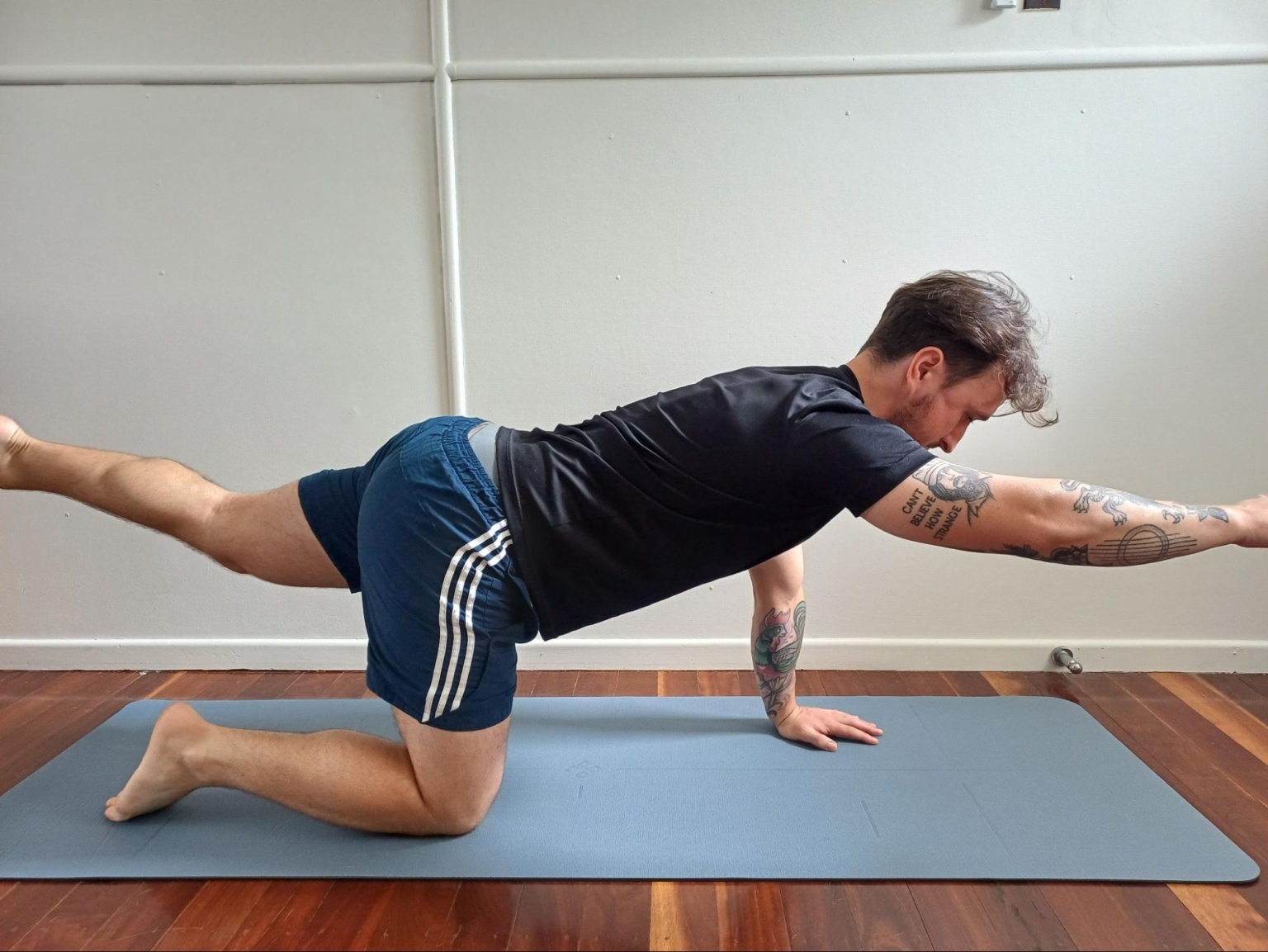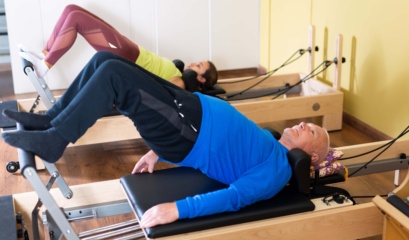The bird dog exercise is a simple yet effective movement that strengthens the core, improves balance, and supports proper posture. It involves extending one arm and the opposite leg while remaining stable in a table top position, and is suitable for injury recovery, injury prevention, or general fitness. At Benchmark Physio, our physiotherapists often recommend the bird dog exercise as an effective tool to help improve conditions such as lower back pain.
What Is the Bird Dog Exercise?
The bird dog exercise is a bodyweight movement designed to strengthen the core, back, and glutes. It involves extending one arm and the opposite leg simultaneously while maintaining balance and stability in a tabletop position. The tabletop position is a common position in yoga and involves being on all fours, with your knees and hands planted firmly on the ground. Despite its simplicity, the bird dog offers significant benefits for people of all fitness levels, from beginners to advanced athletes.
Step-by-Step Guide to Performing the Bird Dog
1. Start in the Tabletop Position
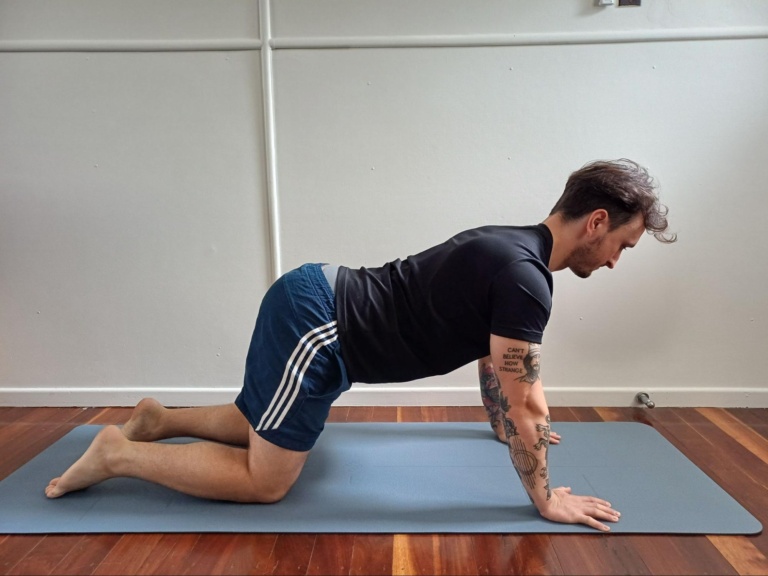
- Place your hands directly under your shoulders and your knees under your hips on a mat.
- Engage your core and maintain a neutral spine.
2. Extend Opposite Arm and Leg
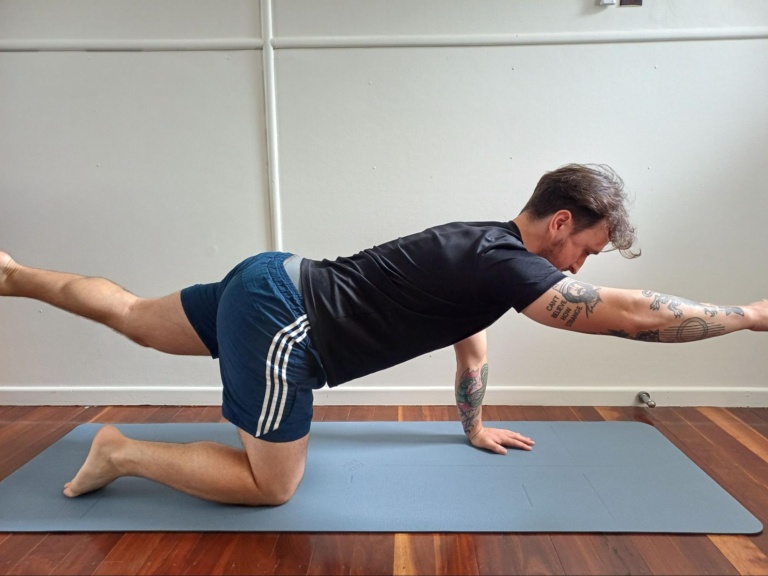
- Slowly lift one arm and the opposite leg until they are parallel to the ground. So if you raise your left arm, you raise your right leg, and vice versa.
- Keep your hips level and avoid rotating your pelvis.
3. Hold and Return

- Hold the position for 2–5 seconds.
- Return your arm and leg to the starting position without rushing.
4. Switch Sides
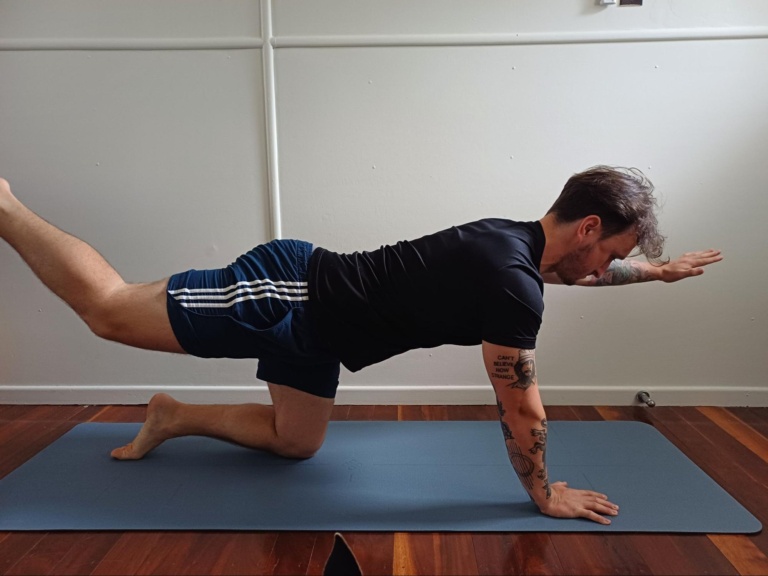
- Repeat with your other arm and leg.
- Perform 2–3 sets of 10–12 repetitions on each side.
Pro Tips for Proper Form
- Keep your abdominal muscles active to stabilise your spine.
- Maintain a neutral spine throughout the exercise.
- Focus on smooth, deliberate movements to maximise the benefits.
- Inhale as you extend and exhale as you return to the starting position.
Common Mistakes and How to Avoid Them
- Use a mirror to check your alignment and prevent excessive curvature.
- Limit leg height to maintain a straight line from head to heel.
- Prioritise control and stability over speed for optimal results.
- Draw your shoulder blades back and avoid letting your chest sink.
Safety Tips
- If you have a history of back or shoulder pain, consult your physiotherapist before starting.
- Discontinue the exercise if you experience discomfort and seek professional advice.
- Use a cushioned mat to protect your knees and wrists.
Benefits of the Bird Dog Exercise
1. Core and Spinal Stability
- The bird dog activates key muscles, including the erector spinae, rectus abdominis, and obliques, promoting spinal stability and reducing the risk of lower back pain.
2. Posture Improvement
- By engaging deep stabilising muscles, the exercise helps align the spine and enhance posture, especially for those who spend hours sitting or standing.
3. Balance and Coordination
- The movement challenges your ability to stabilise through opposite arm and leg extension, improving neuromuscular coordination.
4. Rehabilitation Support
- Physiotherapists frequently use the bird dog to aid recovery from lower back injuries and conditions like hypermobility.
5. Enhanced Athletic Performance
- For athletes, the bird dog strengthens core muscles essential for efficient movement and injury prevention.
Variations of the Bird Dog Exercise (No Equipment Required)
Here are some equipment-free variations of the bird dog exercise that add variety and challenge to your routine:
1. Bird Dog Hold
- Perform the bird dog as usual, but hold the extended position for 10–15 seconds before returning to the starting position. This increases the challenge to your balance and stability.
2. Pulse Bird Dog
- After extending your arm and leg, perform small, controlled pulses up and down with your extended limbs. This engages the stabilising muscles further.
3. Slow Tempo Bird Dog
- Slow down the movement significantly, focusing on control as you lift and lower your limbs. This increases the time under tension for your core muscles.
4. Zipper Bird Dog
- Instead of returning your hand and knee to the floor, bring your elbow and opposite knee together under your body before extending them again. This one is difficult but will really get your core working!
5. Single-Limb Bird Dog
- Perform the exercise by moving only one limb at a time—either an arm or a leg. This reduces the complexity but still strengthens the core and improves balance.
6. Bird Dog with Isometric Core Hold
- Maintain the tabletop position and alternate lifting one hand and the opposite knee just an inch off the ground. Hold this position for a few seconds before switching sides. This simplifies the movement while focusing on core engagement.
These variations make it easy to adapt the bird dog exercise to your fitness level without needing additional equipment, ensuring accessibility and effectiveness for everyone.
Why We Recommend the Bird Dog
The bird dog is a low-impact, equipment-free exercise that delivers tangible benefits for your core strength, stability, and overall functional fitness. Its adaptability makes it suitable for warm-ups, cool-downs, or as part of a targeted rehabilitation program.
At Benchmark Physiotherapy, we integrate evidence-based exercises like the bird dog into personalised treatment plans to help you achieve your health and fitness goals. If you’re interested in learning more or need guidance on incorporating this exercise into your routine, contact us today to book a session with one of our expert physiotherapists. Together, we’ll help you move better and feel stronger!


